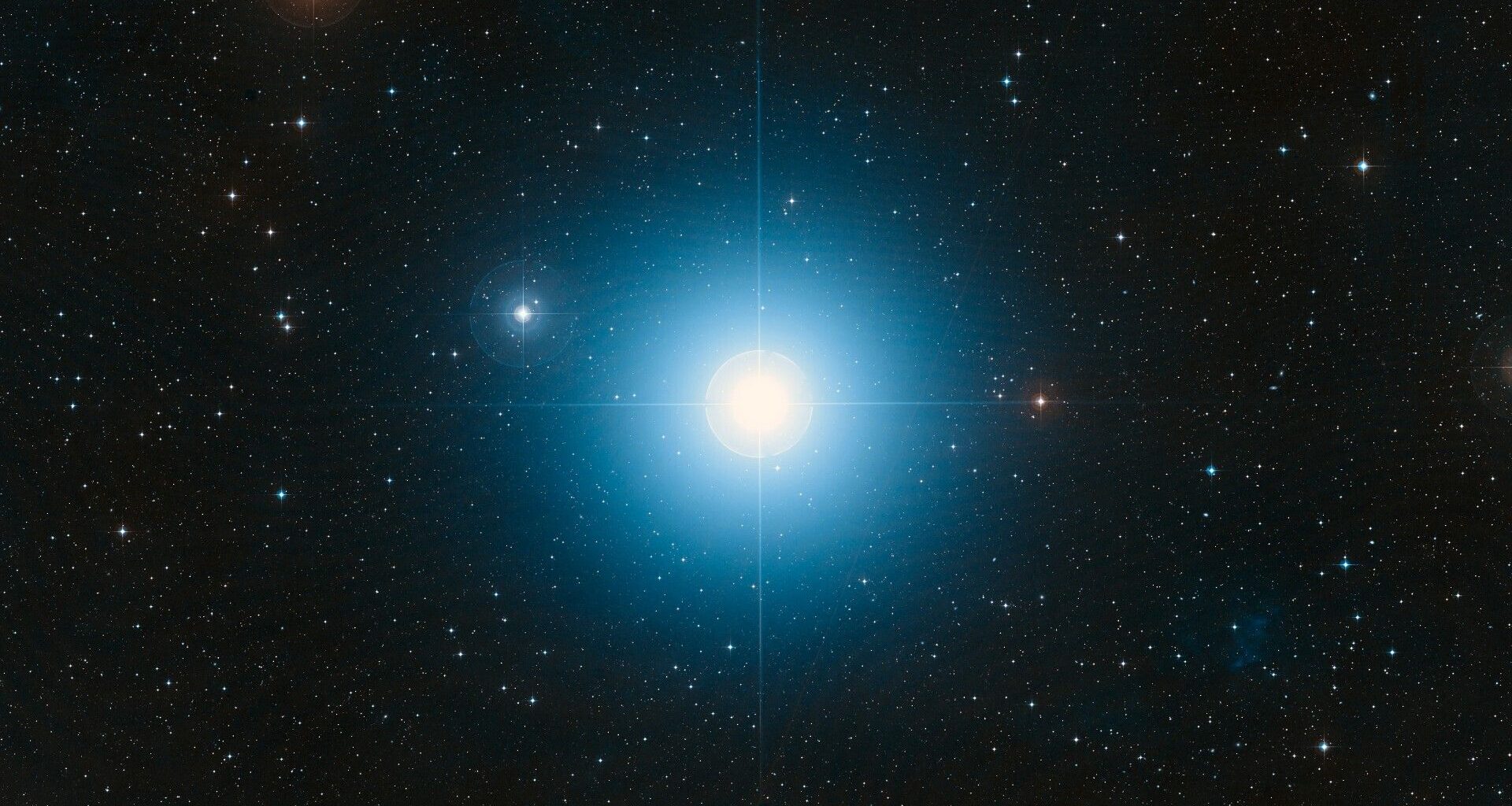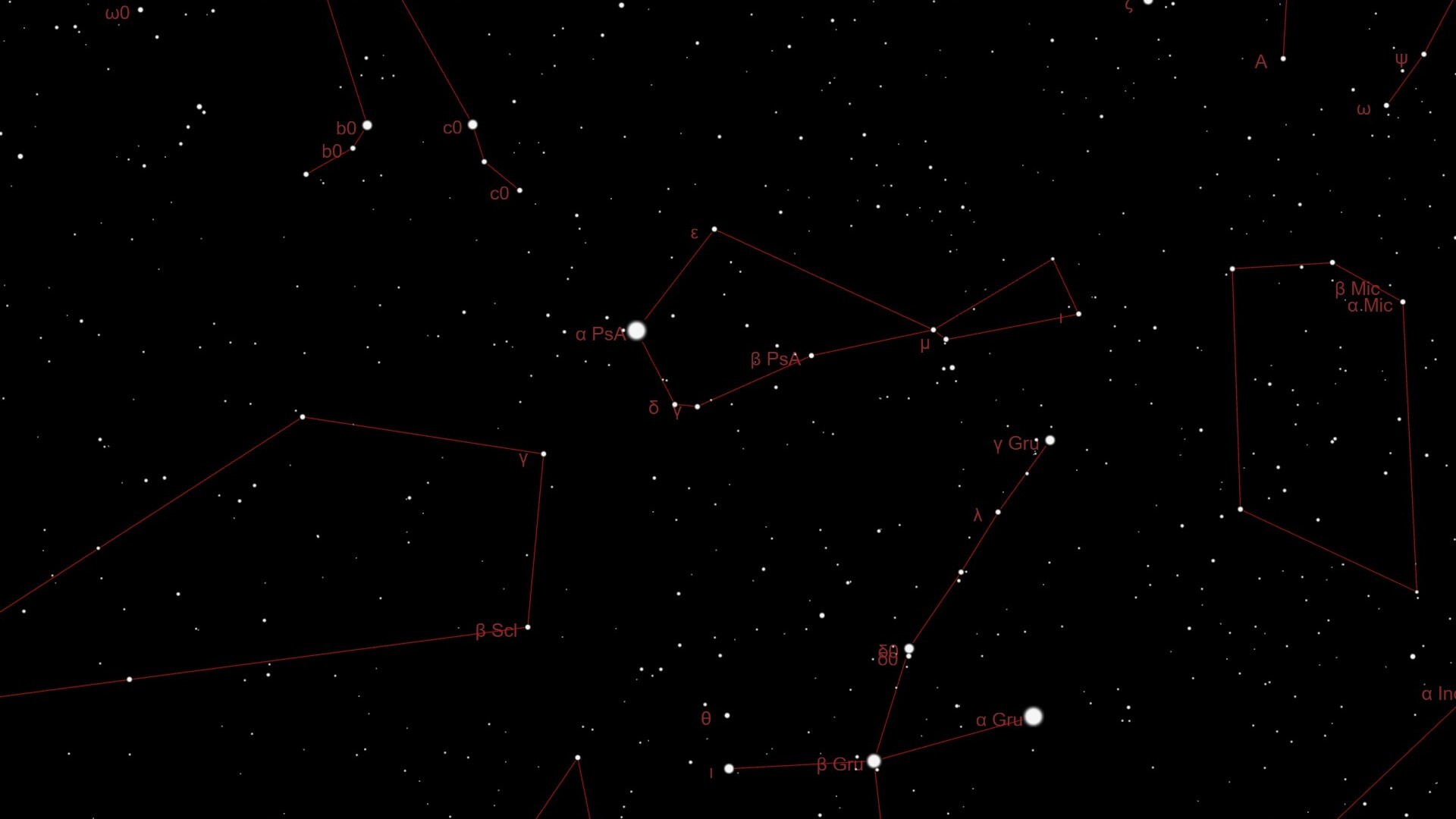As night falls on October evenings, glance toward the southeast horizon. If there is one star that serves to announce the arrival of fall as the leaves have begun to turn, unquestionably that title would have to go to the brightest star within an otherwise dim and obscure star pattern.
That star pattern is Piscis Austrinus the Southern Fish, which resides to the east and south of the zodiacal constellations of Capricornus the Sea Goat and Aquarius the Water Bearer. It’s a V-shaped figure of five stars; faint stars that in most cases, cannot be seen from mid-northern latitudes, for even when they are at their highest above the southern horizon, they are still too low to penetrate the ground haze.
You may like
Practically by itself
Look for it this week low toward the south at around 9:30 p.m. local daylight time. If you need help locating it, consider using a smartphone astronomy app.
Shining at magnitude +1.2, this bluish-white star is relatively close by at only 25 light-years away. It’s almost twice as large as our sun and is about 16 times as luminous. Fomalhaut is also part of a multiple star system, with two other fainter companion stars.
Some 2 degrees of arc (0.03 of a degree) southward from it, is a magnitude 6.5 dwarf star that seems to be sharing Fomalhaut’s motion through space. They are so far apart that it is hard to call them a binary system. Maybe these two stars are all that is left of a cluster that dissipated long ago.
But while it is not an overly bright star, it manages to stand out because it’s the only truly bright star that dominates a considerably dull area of the sky around it. Thus, it is easily seen and identified and is of great interest and value to navigators.
As such, Fomalhaut is often referred to as “The Solitary One,” primarily because it lies in such an empty region of the southern autumn skies. For those living at mid-northern latitudes like New York, Chicago and Denver it is the southernmost of the visible first magnitude stars. Acclaimed popular science writer Fred Schaaf notes that this star, “Stands like a lonely lighthouse beacon near the shore of the Great Celestial Sea of water constellations.”
Martha Evans Martin wrote a popular guide to the night sky in 1907 (revised several times since) called “The Friendly Stars.” Of Fomalhaut, she wrote: “The loneliness of this star, adds to the somber signs of approaching autumn, and sometimes gives one a touch of melancholy.”
The stars of Piscis Austrinus, the Southern Fish constellation. (Image credit: TheSkyLive.com)Stellar aristocracy
Five thousand years ago in Persia, there were four stars that each ruled over its particular quadrant of the sky. They were deemed “Royal Stars” that had the privilege of being among the guardians of heaven, and Fomalhaut was one of the chosen four. The other three were Aldebaran, in Taurus; Regulus in Leo; and Antares in Scorpius.
You may like
Draw a line between the two bright stars marking the right side of the Great Square of Pegasus (Scheat and Markab) and extending that line downward nearly four times the distance between those two stars will bring you to Fomalhaut.
Home to a planet … or comets?
Interestingly, in November 2008 astronomers using the Hubble Space Telescope announced that they had apparently discovered an extrasolar planet orbiting Fomalhaut, possessing nearly three times the mass of Jupiter. However, more recent analyses of existing and new observations utilizing the Spitzer Space Telescope indicate that the supposed planet may actually be nothing more than a knot of material within in an expanding, swirling disk — possibly a belt of comets — composed of gas and dust, that encircles Fomalhaut.
A little fish’s claim to fame
Many of the old-time allegorical star atlases from the 17th and 18th century depicted the Southern Fish as a long, slim fish with an open mouth and usually shown drinking the water that was being poured from the great urn of Aquarius; no mean achievement for such a small creature.
That seemingly is what makes Fomalhaut so special; it’s got a big personality for such a small fry.
Joe Rao serves as an instructor and guest lecturer at New York’s Hayden Planetarium. He writes about astronomy for Natural History magazine, Sky and Telescope and other publications.


